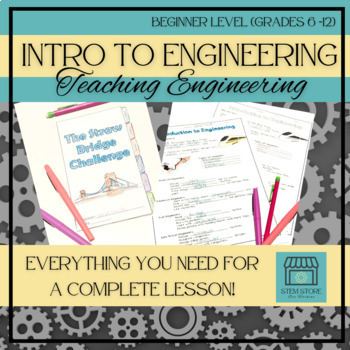Introduction to Engineering Design, STEM Lesson: Teaching Engineering Series:
- Zip
Description
Everything you need for Teaching Engineering! This STEM (STEAM) lesson Introduces Engineering to your students. The 16 slide PowerPoint lesson is perfect for introducing engineering and the engineering design process. There are printable "fill-in-the-blank" notes for students to use during the lesson. There is a printable template for the engineering design process. There is also a simple (low-cost) engineering design challenge for students to be oriented to the design process by building a straw bridge. Plus, there is a tabbed interactive notebook activity to go along with the project. This is basically a no-prep (or low prep) lesson for introducing the engineering design process.
Product includes:
-Powerpoint lesson
-Guided notes for the lesson
-Engineering Design Process Reproducible
-Tabbed, interactive notebook activity for the engineering design challenge
If you love this product, be sure to leave a review and sign up for my VIP list so you can receive FREE resources!




